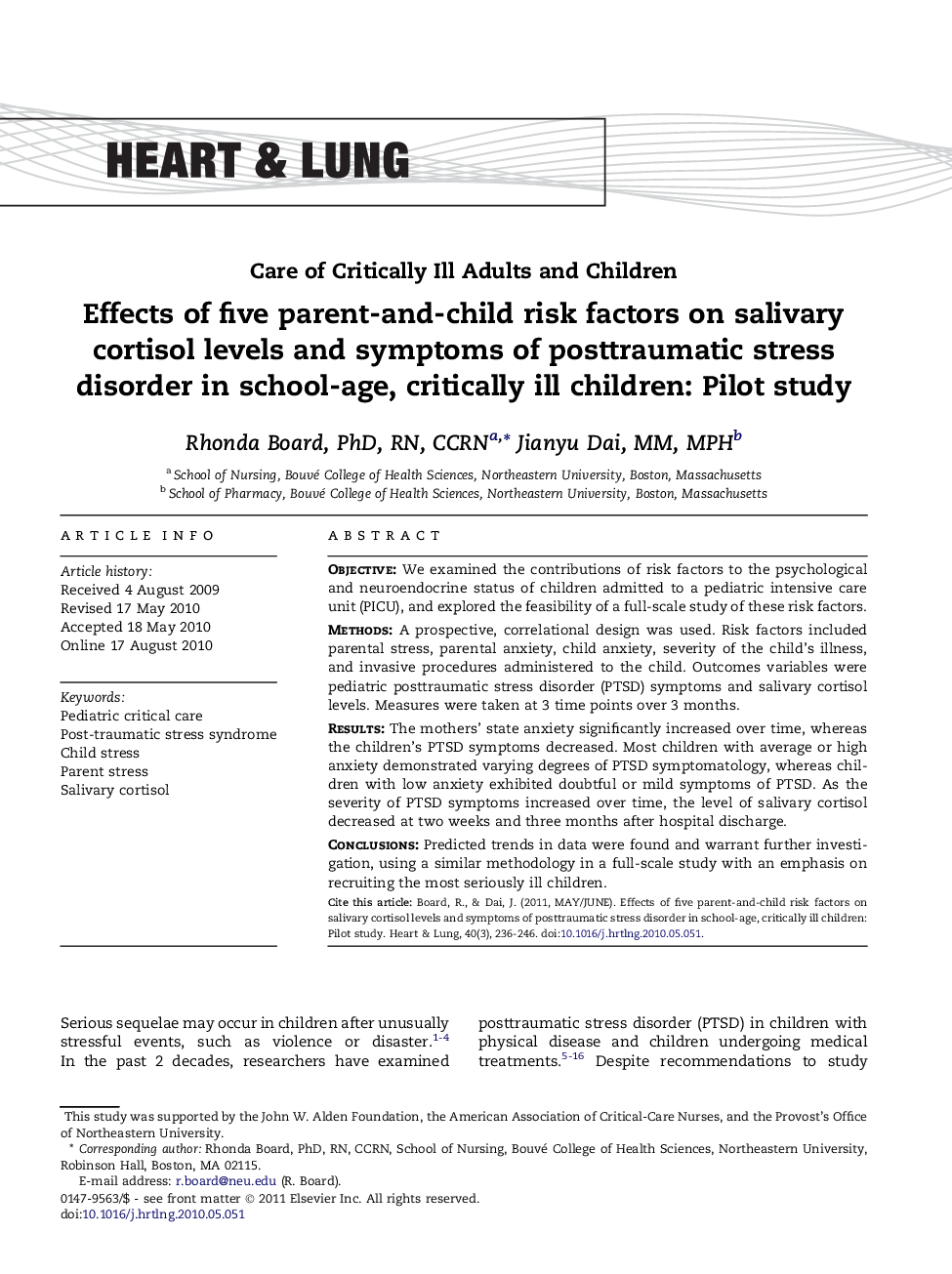| Article ID | Journal | Published Year | Pages | File Type |
|---|---|---|---|---|
| 2651835 | Heart & Lung: The Journal of Acute and Critical Care | 2011 | 11 Pages |
ObjectiveWe examined the contributions of risk factors to the psychological and neuroendocrine status of children admitted to a pediatric intensive care unit (PICU), and explored the feasibility of a full-scale study of these risk factors.MethodsA prospective, correlational design was used. Risk factors included parental stress, parental anxiety, child anxiety, severity of the child's illness, and invasive procedures administered to the child. Outcomes variables were pediatric posttraumatic stress disorder (PTSD) symptoms and salivary cortisol levels. Measures were taken at 3 time points over 3 months.ResultsThe mothers' state anxiety significantly increased over time, whereas the children's PTSD symptoms decreased. Most children with average or high anxiety demonstrated varying degrees of PTSD symptomatology, whereas children with low anxiety exhibited doubtful or mild symptoms of PTSD. As the severity of PTSD symptoms increased over time, the level of salivary cortisol decreased at two weeks and three months after hospital discharge.ConclusionsPredicted trends in data were found and warrant further investigation, using a similar methodology in a full-scale study with an emphasis on recruiting the most seriously ill children.
